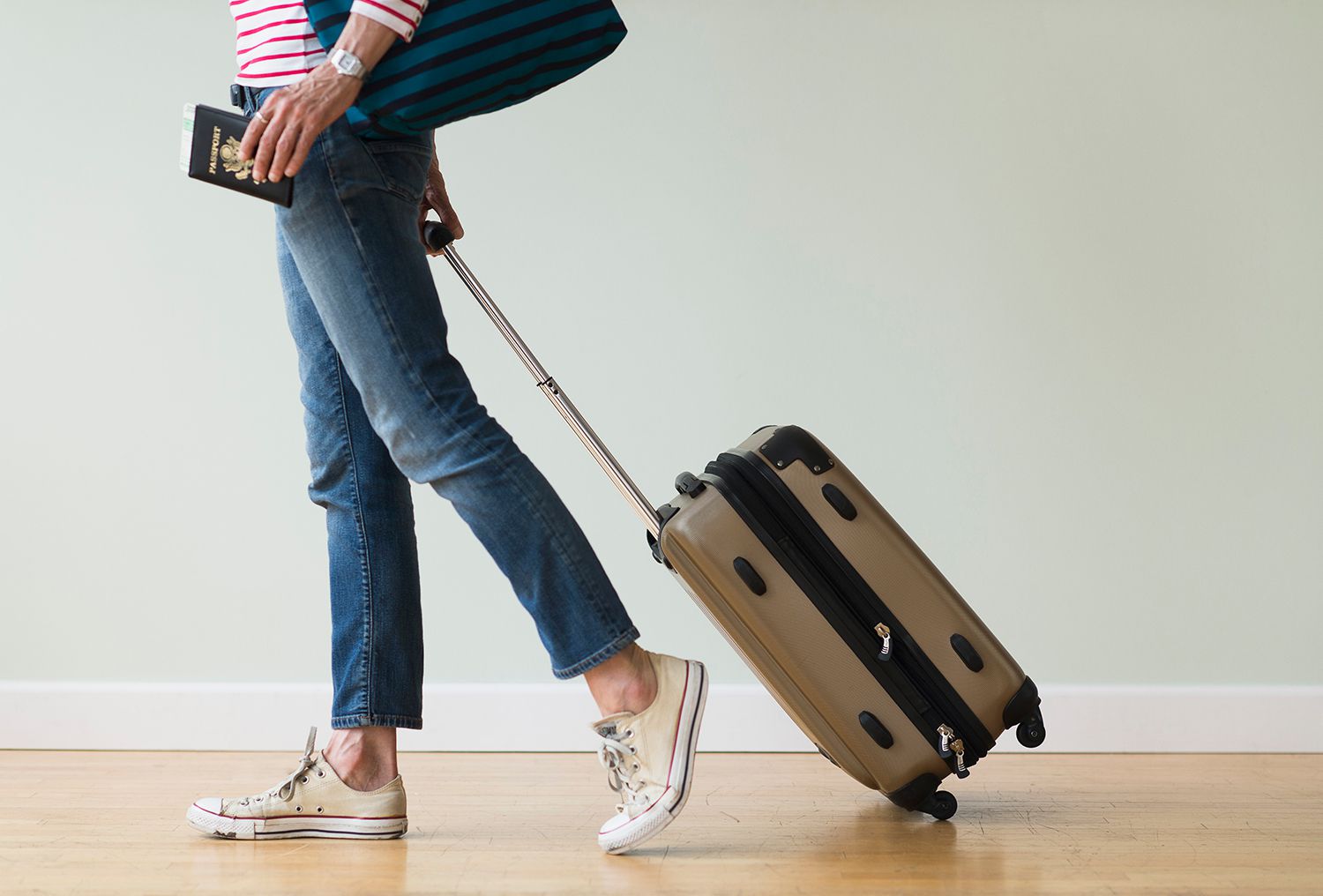
Suitcase Carry: Benefits, Precautions, and How to Perform
Understanding the Suitcase Carry
What is a Suitcase Carry?
The suitcase carry, also known as the farmer’s walk, is a loaded carry exercise where you hold a weight in one hand while walking. The exercise mimics carrying a heavy suitcase or grocery bag and challenges the body to maintain stability and posture while under load.
How Does the Suitcase Carry Work?
The suitcase carry primarily targets the muscles of the core, including the abdominals, obliques, and lower back, as they work to stabilize the spine and pelvis against the downward force of the weight. Additionally, the exercise engages the muscles of the shoulders, arms, and legs to maintain proper posture and balance throughout the movement.
Benefits of the Suitcase Carry
Core Strengthening
The suitcase carry is an excellent exercise for strengthening the muscles of the core, including the deep stabilizing muscles that support the spine. By carrying a heavy weight on one side of the body, the core muscles are forced to work harder to maintain balance and prevent lateral flexion of the spine.
Improved Posture
Performing suitcase carries regularly can help improve posture by promoting proper alignment of the spine, pelvis, and shoulders. The exercise encourages an upright position and teaches the body to resist lateral bending, which can translate to better posture in daily activities.
Increased Grip Strength
Carrying a heavy weight in one hand challenges grip strength and forearm muscles, helping to improve grip endurance and overall hand strength. This can be beneficial for tasks that require a strong grip, such as lifting heavy objects or performing manual labor.
Enhanced Stability and Balance
The suitcase carry requires the body to maintain stability and balance while walking with a heavy load. By challenging proprioception and spatial awareness, the exercise helps improve overall stability and balance, reducing the risk of falls and injuries.
Precautions Before Performing the Suitcase Carry
Start with Light Weights
Beginners should start with lighter weights and gradually increase the load as they become more comfortable with the exercise. Using weights that are too heavy can compromise form and increase the risk of injury.
Maintain Proper Posture
Focus on maintaining proper posture throughout the exercise, with the shoulders back, chest up, and core engaged. Avoid leaning to one side or rounding the shoulders, as this can put unnecessary strain on the spine and increase the risk of injury.
Watch for Uneven Shoulders
Pay attention to any asymmetry or imbalance between the shoulders while performing the suitcase carry. If one shoulder is significantly higher than the other, it may indicate that the load is too heavy or that there is a muscle imbalance that needs to be addressed.
How to Perform the Suitcase Carry
Choose a Weight
Select a weight that is challenging but allows you to maintain proper form throughout the exercise. This can be a dumbbell, kettlebell, or any other weighted object that can be comfortably held in one hand.
Stand Tall
Stand tall with your feet hip-width apart and your core engaged. Hold the weight in one hand, allowing it to hang down by your side with your arm fully extended.
Maintain Proper Alignment
Ensure that your shoulders are level, and your torso is upright with your chest facing forward. Avoid leaning to one side or letting the weight pull you off balance.
Walk Slowly and Steadily
Begin walking slowly and steadily, taking small steps and focusing on maintaining stability and control. Keep your shoulders square and your core tight as you walk.
Continue for Distance or Time
Walk for a predetermined distance or time, aiming to keep the weight steady and your posture upright throughout the exercise. Focus on breathing deeply and maintaining a consistent pace.
Switch Hands
After completing the desired distance or time, switch the weight to the opposite hand and repeat the exercise on the other side to ensure balanced strength development.
FAQs Frequently Asked Questions
What muscles are worked during the suitcase carry?
The suitcase carry primarily targets the muscles of the core, including the abdominals, obliques, and lower back. Additionally, it engages the muscles of the shoulders, arms, and legs to maintain stability and balance.
How does the suitcase carry compare to other loaded carry exercises?
While similar to other loaded carry exercises like the farmer’s walk, the suitcase carry places a greater emphasis on unilateral strength and stability, as it involves carrying a weight in one hand rather than both hands.
Can the suitcase carry help with back pain?
The suitcase carry can be beneficial for individuals with back pain, as it strengthens the muscles of the core and improves spinal stability. However, it’s essential to start with light weights and focus on maintaining proper form to avoid exacerbating existing back issues.
How heavy should the weight be for a suitcase carry?
The weight used for a suitcase carry will vary depending on individual strength and fitness level. Start with a weight that is challenging but allows you to maintain proper form and gradually increase the load as you become stronger.
Can the suitcase carry be performed with other exercises?
Yes, the suitcase carry can be incorporated into a larger workout routine as part of a circuit or as a standalone exercise. It pairs well with other core exercises, lower body exercises, or cardiovascular activities to create a well-rounded workout.
Are there variations of the suitcase carry?
Yes, there are several variations of the suitcase carry that can be performed to increase the challenge or target specific muscle groups. These include the offset carry, waiter’s carry, and rack carry, each of which involves holding the weight in a different position or incorporating additional movements.
How often should the suitcase carry be performed?
The frequency of performing the suitcase carry will depend on individual goals and workout programming. It can be included in a workout routine 1-3 times per week, with adequate rest days between sessions to allow for recovery and muscle growth.
Conclusion
The suitcase carry is a highly effective exercise for improving core strength, stability, and functional strength. By carrying a weight in one hand while walking, you can target the muscles of the core, shoulders, arms, and legs, while also improving grip strength and balance. Incorporate the suitcase carry into your workout routine to enhance overall strength and stability, reduce the risk of injury, and improve posture. Remember to start with light weights, focus on maintaining proper form, and gradually increase the load as you become stronger. With regular practice, the suitcase carry can help you build a strong and resilient body that is better equipped to handle the demands of daily life.



